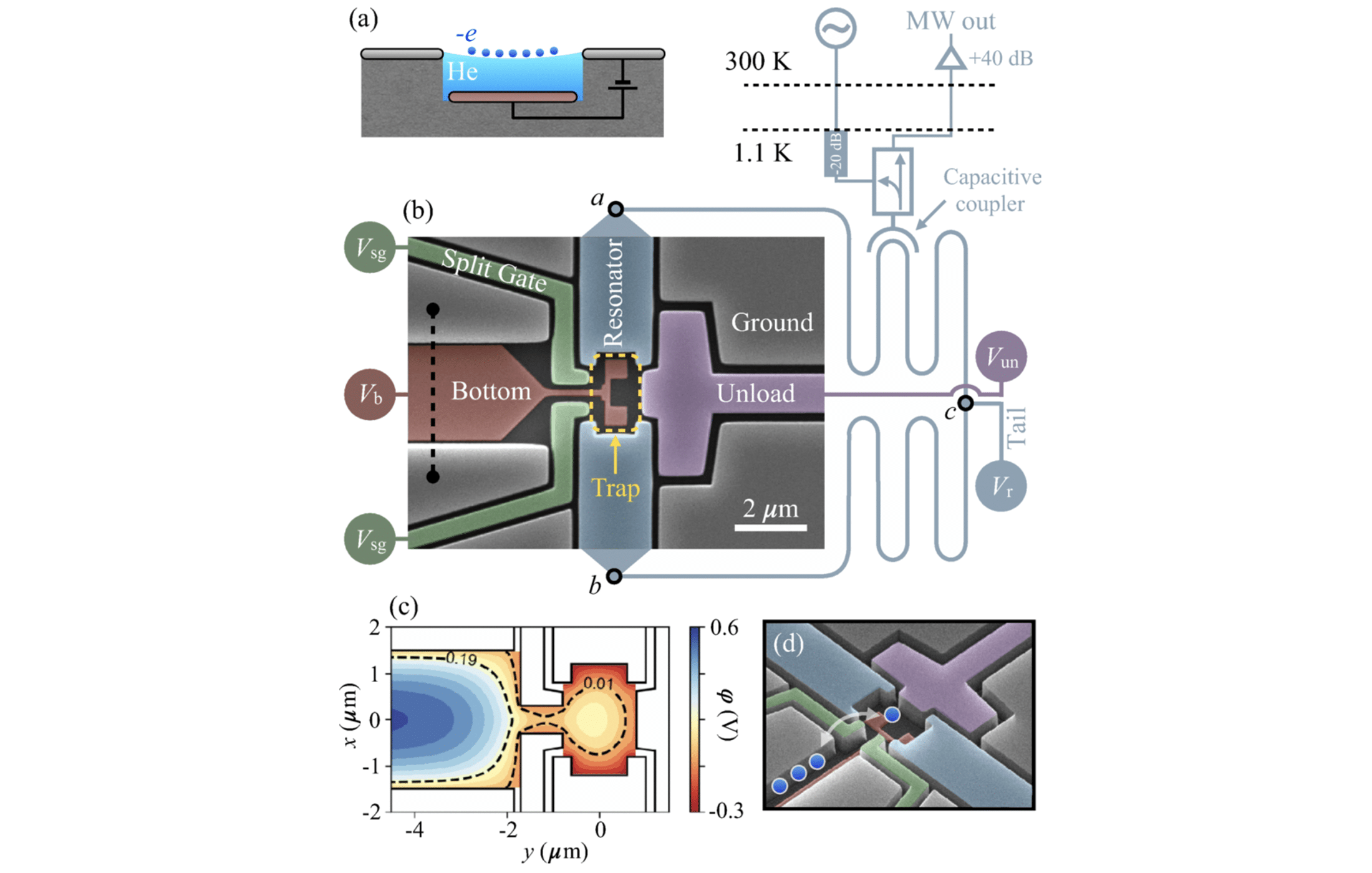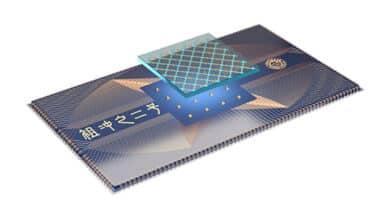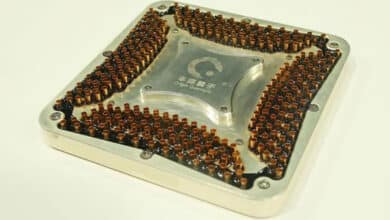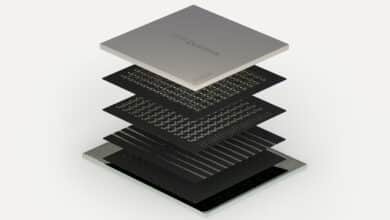Above 1 K Qubits

4 Oct 2025 – A new peer-reviewed study in Physical Review X reports a breakthrough in quantum computing hardware: researchers at the startup EeroQ have successfully trapped and controlled individual qubits at 1.1 kelvin – over 100 times hotter than the ~10 millikelvin temperatures used by today’s quantum processors. The paper, titled “Sensing and Control of Single Trapped Electrons Above 1 Kelvin,” was published on October 2, 2025. In it, EeroQ’s team describes the first-ever demonstration of detecting and manipulating single electrons on superfluid helium at above 1 K. This was achieved using on-chip superconducting microwave circuits to read out the electrons’ state – a technique compatible with existing quantum computing hardware.
Quantum computers typically operate in ultra-cold cryostats just a few millikelvins above absolute zero. For example, leading superconducting qubit systems run at ~0.01 K (10 mK), which is roughly 270 times colder than outer space (~2.7 K). Such extreme refrigeration is a major engineering challenge: maintaining millikelvin temperatures requires bulky dilution refrigerators and severely limits how large quantum processors can grow due to heat dissipation constraints. EeroQ’s result – showing that qubits can function at around 1.1 K – effectively smashes through that milliKelvin barrier. It opens a new pathway toward quantum processors that operate in a far less extreme environment, where cooling and scale-up are much more practical. According to the researchers, the findings also validate a long-standing theory: electrons on helium can serve as exceptionally pure, long-lived qubits even at elevated temperatures, all while dramatically reducing the cooling demands compared to other approaches.
“This breakthrough confirms that electron-on-helium qubits can potentially be manipulated and read out at higher temperatures than previously thought possible, reducing a key barrier to scalable quantum computing,” said Johannes Pollanen, EeroQ cofounder and Chief Science Officer. Publishing in PRX underscores both the scientific rigor and the industry importance of this advance, he added.
At the heart of EeroQ’s approach is a novel qubit design: single electrons floating on a thin film of superfluid helium, held in place by micro-fabricated electrodes on a chip. This platform leverages one of the purest possible environments in physics – a vacuum-like interface between the electron and helium – which minimizes disruptions to the electron’s quantum state. In the new experiment, the team patterned tiny niobium electrodes to form narrow helium-filled microchannels with an isolated trap region connected to an electron reservoir. By tuning electrode gate voltages, they could load single electrons into the trap or remove them on demand. The trapped electron interacts with a coplanar waveguide microwave resonator integrated on the chip, which acts as a sensitive monitor of the electron’s presence and motion. As electrons were added one by one, the resonator’s frequency shifted measurably – allowing the researchers to detect even a single electron “dancing” on the helium in real time.
Notably, the electron-on-helium qubit operated robustly at 1.1 K despite the warmer, noisier environment. The coupling strength between the electron and the microwave resonator was actually more than double that reported in earlier experiments (which were done at millikelvin temperatures). In other words, even though 1 K is over an order of magnitude “hotter” in thermal energy, the team could still cleanly observe single-electron signals matching their theoretical model. These results definitively establish that single-electron control and readout on helium is feasible above 1 K. Why is that so exciting? Because it means future qubit chips based on this technology can be integrated into cryogenic systems with much higher cooling power (e.g. simpler 4 K cryostats or pumped helium-4 refrigerators). In the words of the authors, this capability “paves the way for scalable quantum processors” using electrons on helium and related substrates.
EeroQ – founded in 2017 and headquartered in Chicago – has been pioneering this electron-on-helium quantum computing approach for several years. By marrying an exotic qubit medium (electrons on a quantum fluid) with standard superconducting circuits and nanofabrication, the company aims to build quantum computers that are both powerful and practical to operate. The new PRX publication marks a significant milestone for EeroQ, demonstrating core hardware functionality in a regime long thought out-of-reach for coherent qubits. It also lends experimental weight to the broader idea that quantum bits can thrive in higher-temperature, “clean” environments – an idea that, until recently, was largely theoretical. With this result, a key piece of physics falls into place, giving electron-on-helium qubits a credible advantage in the quest for scalable quantum computing.
Why This “Hot Qubit” Breakthrough Matters
First of all, operating qubits at around 1 kelvin is a huge deal from an engineering standpoint. Today’s quantum processors (whether superconducting qubits from IBM/Google or spin qubits in academia) generally need dilution refrigerators cooling them to millikelvin temperatures. These are complicated, power-hungry machines that push temperatures to within a few millidegrees of absolute zero. Cooling a single quantum chip to 10 mK is hard enough; trying to cool a large-scale quantum computer (with thousands or millions of qubits) at 10 mK is almost unthinkable with current technology. The refrigeration apparatus, wiring, and insulation would resemble a small industrial plant, and heat removal becomes a bottleneck – we’re talking mere microwatts of cooling capacity available at those ultra-low temps. In contrast, at 1-4 K temperatures, cryogenic systems can handle orders of magnitude more heat. For example, a typical dilution fridge might only sink tens of µW at 0.01 K, but can dissipate milliwatts or more at the 1 K stage. That means a qubit platform operating at ~1 K can potentially support far more qubits and activity without overheating.
In EeroQ’s case, their electrons-on-helium qubits could run in a comparatively “warm” cryostat bath, making it much easier to scale up the number of qubits on one machine. The authors themselves highlight that being above 1 K enables integration with higher-power cryogenic systems – a key enabler for building larger quantum processors.
Why does higher operating temperature enable scaling? A few key reasons stand out:
- Cooling Power & Simpler Infrastructure: At 1 K, refrigeration is vastly more efficient. We can use pumped liquid helium or multi-stage cryocoolers that are far simpler than dilution fridges. More cooling power means we can support the heat load of more qubits, more wiring, and faster gate operations. We might no longer need a forest of dilution units to reach millions of qubits – a major relief for quantum datacenter design.
- Integrated Control Electronics: Running qubits at higher temperature raises the possibility of putting some control or readout electronics inside the cryostat alongside the qubits. Today, nearly all control wiring has to go to room temperature or at least to a 4 K stage, because 10 mK devices can’t tolerate the heat dissipation of conventional electronics. But if your qubits live at ~1 K, you could imagine placing low-power classical circuits (amplifiers, multiplexers, maybe even cryo-CMOS chips) at the 1 K or 4 K tier to handle signals on-site. This would greatly reduce the complexity and latency of wiring every qubit to external instruments. In short, a 1 K qubit platform might allow a more compact, integrated “qubit-in-a-fridge” architecture, rather than an entire football-field of cooling gear and cables.
- Maintaining Quantum Coherence in a Harsh Environment: Perhaps the most impressive aspect here is that EeroQ’s qubits still behaved quantum-mechanically at 1.1 K. Thermal energy at 1 K is about $$k_B T \sim 86 \mu$$eV (which far exceeds the energy scales of many qubit operations), so one might worry the electrons’ delicate quantum states would be washed out by the heat. But the experiment showed that with a careful design and an ultra-clean helium environment, even single electrons can retain coherence enough to be detected individually. This speaks to the inherent strength of the electron-on-helium platform: the electrons are so nicely isolated (floating in vacuum above a pristine surface) that they suffer minimal decoherence, even when the surrounding temperature is relatively high. That bodes well for the scalability and error rates of these qubits as the system grows.
From a broader quantum computing perspective, this “hot qubit” breakthrough could be transformative. One of the oft-cited barriers to building a cryptographically relevant quantum computer (the kind that could break RSA/ECC encryption) is the cryogenic requirement.
Experts estimate that breaking RSA-2048 via Shor’s algorithm would likely require on the order of millions of physical qubits, once error-correcting codes are accounted for. Millions of qubits is a staggering leap from the few hundred qubits available today, and one big reason is that you simply can’t fit or cool that many qubits with our current 10 mK setups. The cooling power and space constraints make it nearly impossible – a point often used to argue that quantum code-breaking is still a distant threat.
However, if qubits can reliably operate at ~1 K, that narrative starts to change. A 1 K quantum computer would be far less constrained by cooling issues, making the prospect of scaling to millions of qubits much more realistic. We could envision large multi-chip quantum processors, or many modules each in a relatively simple cryostat, networked together – designs that are incredibly hard to implement at millikelvin temperatures, but plausible at higher cryogenic temps.
In essence, EeroQ’s advance reduces a critical roadblock on the path to at-scale quantum machines. By proving that qubits don’t always need an ultracold babysitter, this work shortens the timeline to what the cybersecurity community calls “Q-Day.”
The EeroQ result doesn’t instantly create a code-breaking quantum computer, of course. It’s one qubit (or a few qubits) in a lab demo. But it is a proof-of-concept that attacks one of the hardest scalability problems – cooling. It suggests that future qubits might not be as fragile and heat-intolerant as we thought. In my view, this raises the stakes for cybersecurity preparedness. If innovations like this continue, the first cryptography-breaking quantum computer could arrive sooner than many expect. As a result, the urgency grows for governments and industries to transition to quantum-safe (post-quantum) encryption well before Q-Day strikes.
Quantum Upside & Quantum Risk - Handled
My company - Applied Quantum - helps governments, enterprises, and investors prepare for both the upside and the risk of quantum technologies. We deliver concise board and investor briefings; demystify quantum computing, sensing, and communications; craft national and corporate strategies to capture advantage; and turn plans into delivery. We help you mitigate the cquantum risk by executing crypto‑inventory, crypto‑agility implementation, PQC migration, and broader defenses against the quantum threat. We run vendor due diligence, proof‑of‑value pilots, standards and policy alignment, workforce training, and procurement support, then oversee implementation across your organization. Contact me if you want help.



